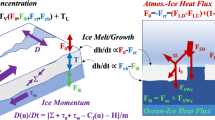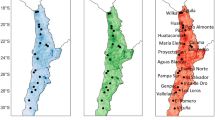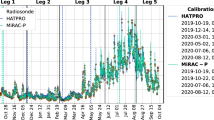Abstract
SINCE March 1, 1957, a net exchange radiometer of the Gier and Dunkle type manufactured by Beckman and Whitley has been in continuous operation at Scott Base (77° 51′ S., 166° 48′ E.) on Ross Island. The radiometer measures the difference between the total incoming and outgoing long- and short-wave radiation through a horizontal surface 6 ft. above the ground. The site of the radiometer is such that the surface beneath the instrument is not snow at all times, because bare rock is exposed in the summer. However, the radiation-properties of the surface as a whole are probably typical of many areas in McMurdo Sound and other partially snow-free areas of the Antarctic, and the results are of particular interest for this reason.
This is a preview of subscription content, access via your institution
Access options
Subscribe to this journal
Receive 51 print issues and online access
$199.00 per year
only $3.90 per issue
Buy this article
- Purchase on Springer Link
- Instant access to full article PDF
Prices may be subject to local taxes which are calculated during checkout
Similar content being viewed by others
References
Rusin, N. P., Information Bull., Soviet Antarctic Expedition, 2, 25 (1958).
Liljequist, G. H., Norwegian-British-Swedish Antractic Expedition 1949–52. Scientific Results, 2, pt. 1 Norsk Polarinstitutt, Oslo (1956).
Loewe, F., J. Glaciol., 2, 657 (1956).
Author information
Authors and Affiliations
Rights and permissions
About this article
Cite this article
THOMPSON, D., MACDONALD, W. Radiation Balance at Scott Base. Nature 184, 541–542 (1959). https://doi.org/10.1038/184541a0
Issue Date:
DOI: https://doi.org/10.1038/184541a0
Comments
By submitting a comment you agree to abide by our Terms and Community Guidelines. If you find something abusive or that does not comply with our terms or guidelines please flag it as inappropriate.



